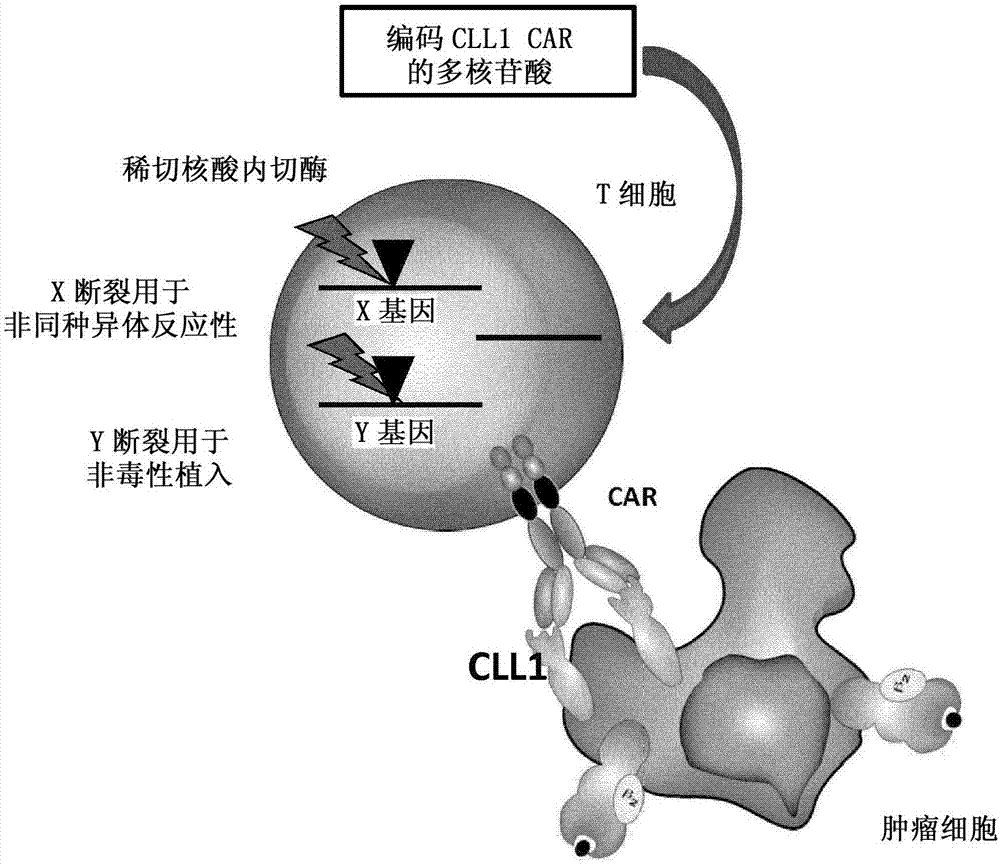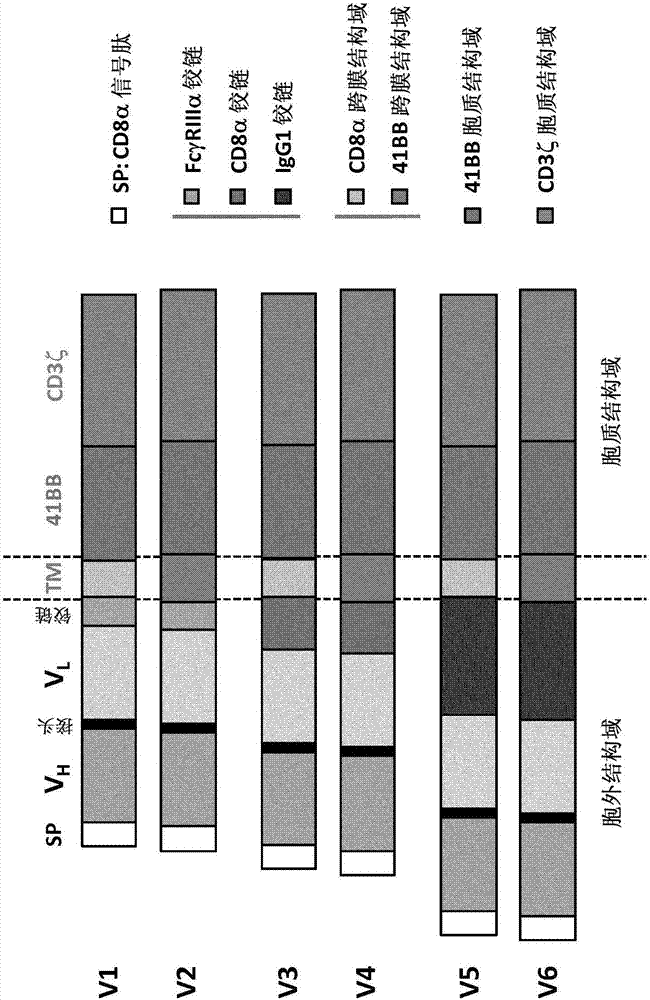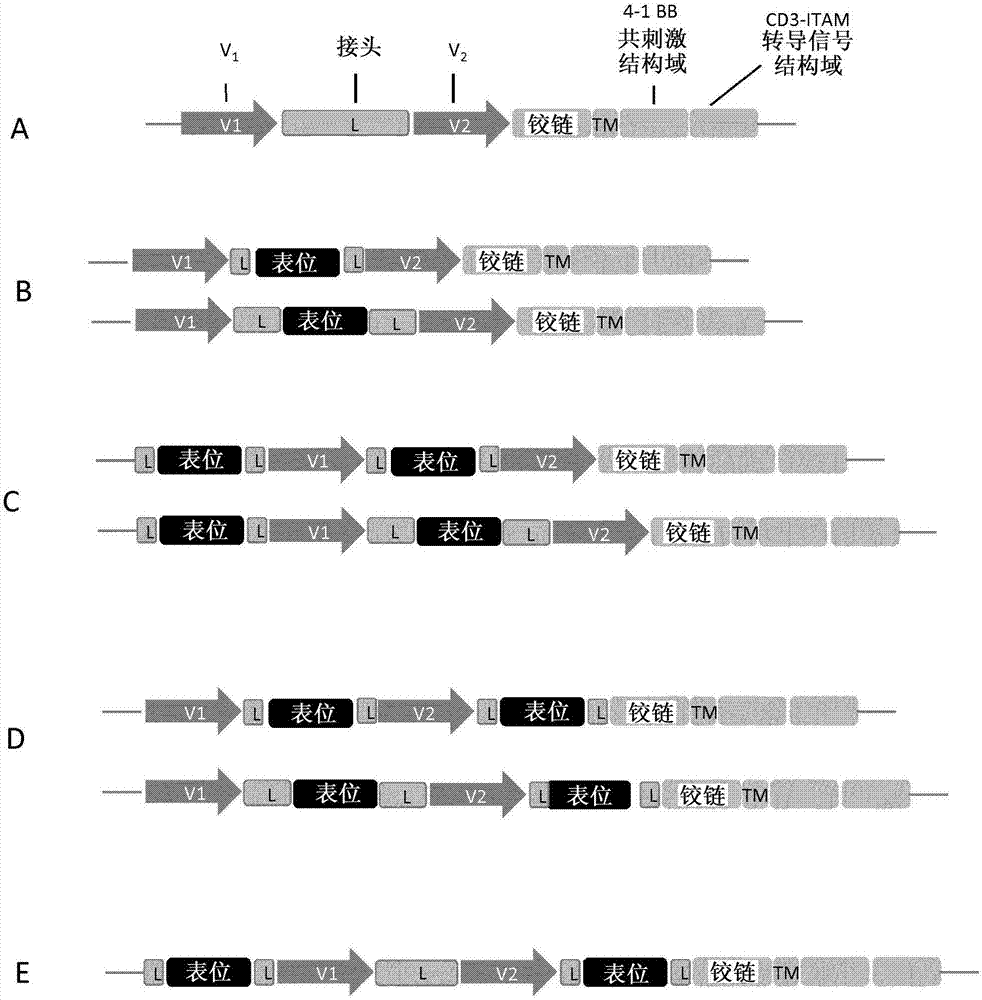Anti-CLL1 specific single-chain chimeric antigen receptors (scCARs) for cancer immunotherapy
A chimeric antigen receptor, specific technology, applied in the direction of antibody mimics/scaffolds, DNA/RNA fragments, the use of vectors to introduce foreign genetic material, etc., can solve the problem of no therapeutic effect
- Summary
- Abstract
- Description
- Claims
- Application Information
AI Technical Summary
Problems solved by technology
Method used
Image
Examples
Embodiment approach
[0424] According to another embodiment, the CLL1-specific chimeric antigen receptor (anti-CLL1 CAR) comprises an extracellular binding domain, wherein at least two epitopes are inserted in the extracellular domain in such a way that the VH and VL chains are located between them, all of these components are optionally separated by at least one linker.
[0425] In a preferred embodiment, the CLL1-specific chimeric antigen receptor (anti-CLL1 CAR) has one of the polypeptide structures selected from V1, V3 or V5, such as figure 2 As shown, the structure at least comprises an anti-CLL1 extracellular ligand-binding domain, a CD8α transmembrane domain, a 4-1BB co-stimulatory domain, a CD3ζ signaling domain, and two of the epitopes are inserted in this way In the extracellular domain, such that the VH and VL chains are located between them, all these components are optionally separated by at least one linker.
[0426] In a more preferred embodiment, the CLL1-specific chimeric antige...
Embodiment 1
[0683] Example 1: Proliferation of TCRα-inactivated cells expressing CLL1-scCAR
[0684] designed and produced a heterodimeric TALE nuclease that targets two 17-bp long sequences (termed half targets) that are expressed in the T cell receptor alpha constant chain region (TRAC) gene The 15-bp spacer (spacer) inside separates. Each half-target is recognized by the repeat sequence of the half-TALE nucleases listed in Table 10.
[0685] Table 10: TAL nucleases targeting the TCRα gene
[0686]
[0687] Each TALE nuclease construct was subcloned by restriction enzyme digestion in a mammalian expression vector under the control of the T7 promoter. The mRNA encoding the TALE nuclease-cleaved TRAC genomic sequence was synthesized from a plasmid carrying the coding sequence downstream of the T7 promoter.
[0688] Purified T cells preactivated with anti-CD3 / CD28 coated beads during 72 hours were transfected with each of the 2 mRNAs encoding the two half TRAC_T01 TALE nucleases. ...
Embodiment 2
[0691] Example 2: Construction of CLL1 scCAR using various anti-CLL1 antibody fragments
[0692] Primary T cell culture
[0693] Using Ficoll gradient density medium (Ficoll PaquePLUS / GE Healthcare Life Sciences), by EFS (Etablissement du Sang, Paris, France) to purify T cells from buffy coat samples. The PBMC layer was recovered and T cells were purified using a commercial T cell enrichment kit (Stem Cell Technologies). In X-Vivo supplemented with 20 ng / mL human IL-2 (MiltenyiBiotech), 5% human serum (Sera Laboratories), and Dynabeads human T activator CD3 / CD28, beads: cell ratio 1:1 (Life Technologies), TM -15 medium (Lonza) to activate purified T cells. After activation, in X-Vivo supplemented with 20ng / mL human IL-2 (Miltenyi Biotec) and 5% human serum (Sera Laboratories) TM Cells were grown and maintained in -15 medium (Lonza).
[0694] scCAR mRNA transfection
[0695] Transfection was performed on day 4 or 11 after T cell purification and activation. 5 million ...
PUM
 Login to View More
Login to View More Abstract
Description
Claims
Application Information
 Login to View More
Login to View More - R&D
- Intellectual Property
- Life Sciences
- Materials
- Tech Scout
- Unparalleled Data Quality
- Higher Quality Content
- 60% Fewer Hallucinations
Browse by: Latest US Patents, China's latest patents, Technical Efficacy Thesaurus, Application Domain, Technology Topic, Popular Technical Reports.
© 2025 PatSnap. All rights reserved.Legal|Privacy policy|Modern Slavery Act Transparency Statement|Sitemap|About US| Contact US: help@patsnap.com



